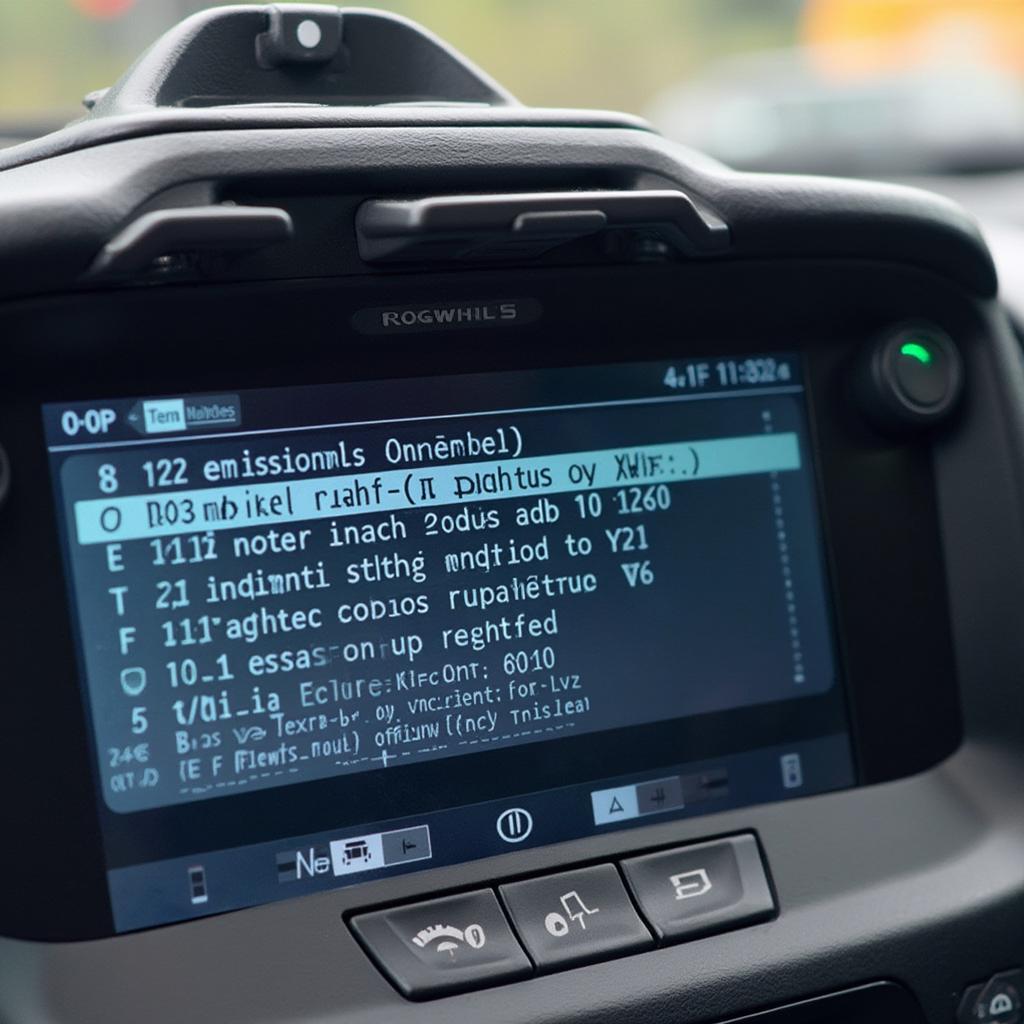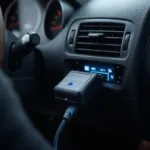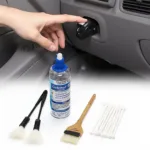Finding reliable obd2 emission inspection stations in PA can be a crucial part of car ownership. Whether you’re a seasoned Pennsylvania driver or new to the state, understanding the process and locating approved inspection stations is essential for keeping your vehicle road-legal and environmentally friendly. This guide will delve into everything you need to know about OBD2 emissions testing in the Keystone State.
Understanding OBD2 Emissions Testing in Pennsylvania
Pennsylvania utilizes OBD2 (On-Board Diagnostics II) testing as part of its vehicle emissions inspection program. This system checks your vehicle’s computer for diagnostic trouble codes (DTCs) that could indicate emissions-related problems. The OBD2 system monitors various components, including the catalytic converter, oxygen sensors, and evaporative emissions system. A malfunctioning component can trigger a DTC, leading to a failed emissions test.
The goal of the OBD2 emissions inspection is to identify vehicles that are polluting the air beyond acceptable limits. By catching these issues early, the program helps improve air quality and protect public health. It also encourages vehicle owners to maintain their vehicles properly, leading to better fuel efficiency and overall performance. Did you know that a properly functioning emissions system can also save you money on gas?
Locating OBD2 Emission Inspection Stations in PA
Finding an authorized obd2 emission inspection station in PA is straightforward. The Pennsylvania Department of Transportation (PennDOT) maintains a list of certified inspection stations on its website. You can search by county, zip code, or station name. This ensures you find a legitimate location that adheres to PennDOT’s standards.
Many auto repair shops, service stations, and dealerships are certified to perform emissions inspections. Some stations may specialize in specific vehicle makes and models. Choosing a reputable station with experienced technicians is always advisable.
What to Expect During an OBD2 Emissions Inspection
The inspection process is relatively quick and painless. The technician will connect the OBD2 scanner to your vehicle’s diagnostic port, usually located under the dashboard. The scanner will then communicate with your vehicle’s computer, retrieving any stored DTCs.
If no DTCs are present and all monitored systems are ready, your vehicle will pass the inspection. However, if DTCs are detected, or if the OBD2 system is not ready, further diagnosis and repairs may be required before your vehicle can pass. Don’t panic if your vehicle fails initially – it’s often a simple fix.
2004 honda civic obd2 location
Common Reasons for OBD2 Emissions Test Failure
Several common issues can cause a vehicle to fail an OBD2 emissions test. A loose or damaged gas cap is a frequent culprit, as it can lead to evaporative emissions leaks. Faulty oxygen sensors, catalytic converters, or spark plugs can also trigger DTCs and result in a failed test. Regular maintenance is key to preventing these problems.
“Regular maintenance and timely repairs are crucial for passing emissions inspections and keeping your car running smoothly,” says John Smith, a certified automotive technician with over 20 years of experience. “Addressing small issues before they escalate can save you significant time and money in the long run.”
 OBD2 Emissions Test Failure
OBD2 Emissions Test Failure
Tips for Passing Your OBD2 Emissions Inspection
- Regular Maintenance: Keeping up with your vehicle’s scheduled maintenance is the best way to prevent emissions problems.
- Check Engine Light: If your check engine light is on, address the issue promptly.
- Gas Cap: Ensure your gas cap is properly tightened.
- Drive Cycle: Sometimes, the OBD2 system needs to complete a “drive cycle” to reset its monitors. This involves driving under various conditions, such as city and highway driving.
- Pre-Inspection Check: Consider having a pre-inspection check at a trusted mechanic to identify potential issues before your official inspection.
Conclusion
Understanding the requirements for obd2 emission inspection stations in PA is essential for all vehicle owners. By following the tips outlined in this guide and staying proactive with vehicle maintenance, you can ensure your car passes its emissions test and contributes to a cleaner environment.
does california dmv check obd2
FAQ
- How often do I need an emissions inspection in PA?
- What happens if my vehicle fails the emissions test?
- How much does an emissions inspection cost?
- Can I get an extension if my vehicle needs repairs?
- Where can I find a list of certified inspection stations?
- What is an OBD2 scanner?
- What are the most common reasons for emissions test failure?
Common Scenarios and Questions:
-
Scenario: My check engine light is on, but the car seems to be running fine. Should I still go for the emissions test?
-
Answer: No. Address the check engine light issue first. It’s likely your vehicle will fail the emissions test.
-
Question: Can I get my emissions inspection done early?
-
Answer: Yes, you can typically get your inspection done up to 90 days before your current sticker expires.
Further Resources:
For more information on OBD2 locations for specific car models, visit our guides on 2002 Ford Focus OBD2 Location and 2004 Honda Civic OBD2 Location.
Need assistance? Contact us via WhatsApp: +1(641)206-8880, Email: [email protected] or visit our office at 789 Elm Street, San Francisco, CA 94102, USA. We have a 24/7 customer service team ready to help.

